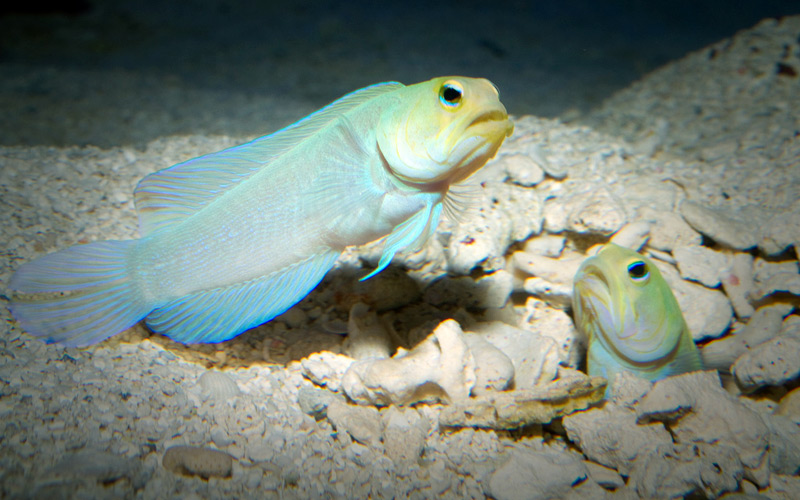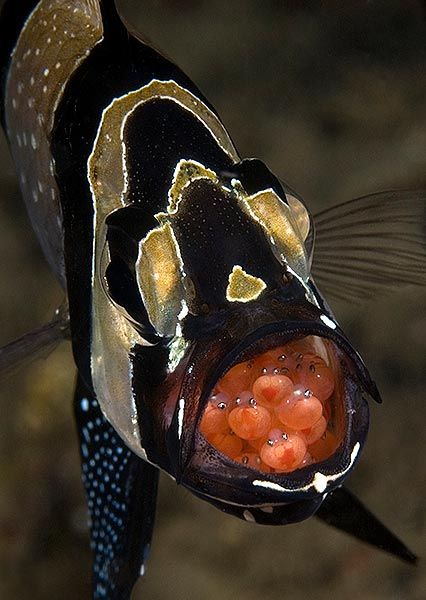Breeding aquarium fish can be one of the pinnacles of aquarium success but several groups of fish including jawfish and cardinalfish make it much easier due to one quirk of their parental care, mouthbrooding. Any one who’s kept african cichlids knows that you don’t have to do much to end up with baby fish darting about the rocks and aquascape.
The degree of mouthbrooding care varies a lot with our beloved banggai cardinalfish being a a champion at protecting their young inside their mouths until fully formed miniature fish are ready to be released into the world. Mouthbrooding may be very effective at protecting young fish but it’s also very costly to the species that practice it since the parent in charge has to starve while their buccal cavity is filled with the next generation.

We’ve often wondered how in the world the mouthbrooding behavior evolved in so many species of fish, resisting the instinct to eat tasty morsels that are already in their mouths while they are hungry. Naturally, species of fish with larger mouths were already predisposed to being able to care for their young in this fish, and the jawfish are naturally inclined to manipulating stones and rubble with their large jaws, hence their name.
While most species of fish are broadcast or substrate spawners, the evolution of mouthbrooding coincides where predation of the young is high, especially where fish abundance and diversity is very high such as in coral reefs or the analogous rift lakes of east Africa. If you have one or several rugrats of your own consider yourself lucky that you don’t have to keep a few dozen in your mouth and starving while you do it because the jawfish and cardinalfish certainly go the extra mile when it comes to caring for their young.



